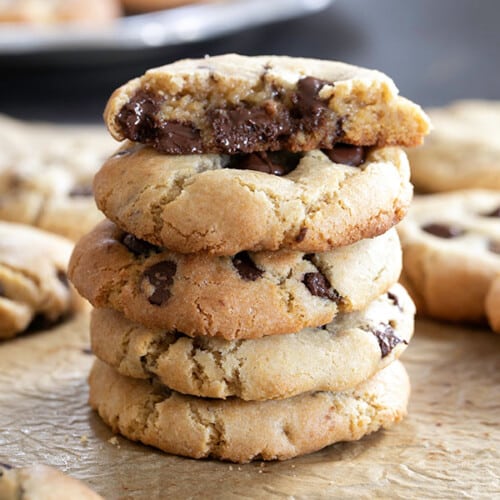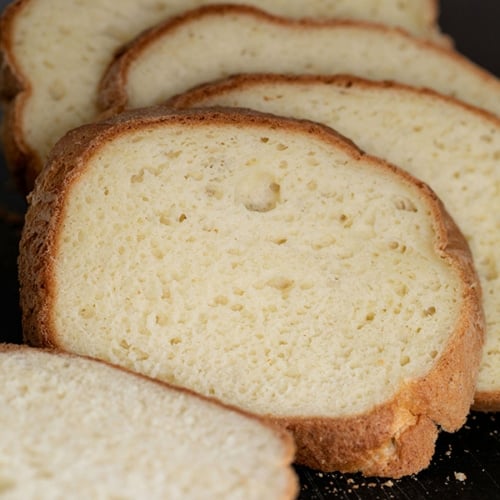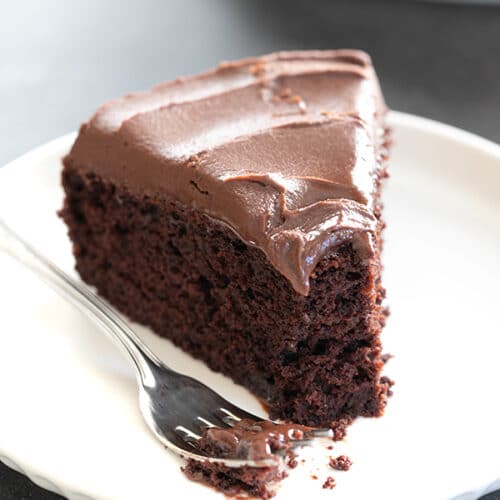What is Gluten Free Flour? A Complete Guide
Deciding what gluten free flour blend to use for baking is the most important choice you'll make on your gluten free journey. I've been baking gluten free since 2004, and I've tried it all. I can help you make the right choice so no one would be able to tell that your baked goods are gluten free. Choose the wrong gluten free flour mix, and your baked goods will be just “good, for gluten free”—regardless of the recipe you're using. So let's get it right, together!
This post contains affiliate links. Please read our disclosure policy.

Understanding gluten free flour
What makes a flour gluten free?
A flour is gluten free if it's made from grains or other ingredients that are free gluten, which is the protein found in wheat, barley and rye. No single gluten free flour can behave like an all purpose wheat flour in baking.
When we blend the right individual gluten free flours in proper proportions, that blend can behave like an all purpose flour. And then we can bake literally anything gluten free that they can make with gluten.
Should you buy or make a blend?
You should purchase a pre-mixed blend if you want the work done for you, and are willing to order something online in the U.S.. If you live outside the U.S., or are unable or unwilling to order a blend, you can make your own from one of my tried and true recipes.
If you buy a blend, you should buy one of the following 3 blends, which I will discuss in greater detail:
- Nicole's Best Multipurpose Gluten Free Flour Blend
- Better Batter Gluten Free Original All Purpose Flour Blend
- Cup4Cup Multipurpose Flour Gluten Free
Making your own blend will require some specialty ingredients, time, and math. Buying a premade gluten free flour mix will save you time and wasting ingredients, with the biggest bonus being that all the guess work is removed from your gluten free baking.
You can purchase Nicole’s Best multipurpose gluten free flour only on our new Nicole’s Best sales website, Bestgfflour.com. It’s the best blend available, but it’s not yet widely available. Don’t worry, Better Batter (linked below) works in all my recipes that call for an all purpose gluten free flour mix.
The role of rice flour
All the all purpose gluten free flour blends that I buy, build or recommend are rice flour-based blends. White rice is high in starch and relatively low in protein; brown rice is higher in protein but absorbs more water than white rice.
A blend of white and brown rices, along with the added starches like tapioca and potato starch, and sometimes milk powder creates a blend of gluten free flours that produces all the qualities we look for in baked goods: a tender crumb, good volume, crispy edges, chewiness, and appropriate browning in the oven.
It’s important to use a very finely-milled rice flour in your blend, or your baked goods will be gritty and the flours will not blend into the other ingredients properly.
You can purchase a finely ground rice flour online. I like Authentic Foods superfine rice flours best, but the Nuts and Vitacost websites also sometimes sell superfinely ground gluten free brown and white rice flours. You can make your own rice flour using a grain mill, but it's time-consuming and labor-intensive.
The myth of a cup for cup replacement for wheat flour
Gluten-free baking calls for gluten-free recipes. Plain and simple. There is no such thing as a cup-for-cup gluten-free flour blend that mimics conventional flour enough to be used in all of your conventional recipes.
Gluten-free recipes and conventional recipes are different from one another. Even the best all purpose gluten free flour blend will absorb more moisture than conventional all purpose wheat flour. Even a perfect gluten free flour blend will need more structure to support it in the oven, to ensure that your cookies are crisp, your bread chewy, and your cakes moist and tender.
A great all purpose gluten free flour performs well for all purposes. But that doesn’t mean it performs the same as gluten-containing flour. And it doesn’t have to.
Gluten free recipes call for other ingredients like milk, eggs, butter, sugar, and yeast to be in different proportions , and often to be handled differently in the process. But with the right flour blend, and the right recipe, your baked goods will taste at least as good, if not better, than you remember.
Types of gluten free flours
There are many individual gluten free flours available to buy. They fall into a few different categories and each has its own general uses:
Starchy flours
- White rice flour: provides structure and a base on which to build other flours; it must be finely ground or it will create a gritty mouth feel that leads people to think gluten free baked goods are sub-par
- Potato starch: broken down potatoes release their starch, which is then dried and forms this powder; it helps create crispiness in baked goods
- Tapioca starch: also called tapioca flour, is made from the starch of the cassava root. It adds lift and elasticity to baked goods
- Glutinous white rice flour: Made from short grain white rice, it's also called sweet white rice flour; it is great at holding things together and can sometimes replace tapioca starch in baked goods
- Cornstarch: Easy to find, inexpensive, and adds crispness to baked goods; can balance the heaviness of higher protein flours
- Arrowroot: Can often substitute for cornstarch; comes from the arrowroot plant and is used as a thickener, like most starches
Protein-rich and whole grain flours
You can find a full discussion of gluten free whole grains on the blog, but here are a few selections that I use in baking:
- Brown rice flour: still starchy, but contains more protein than white rice flour; often used in equal amounts with white rice flour because alone it can make baked goods heavy, like whole wheat flour does. Be sure yours is superfinely ground.
- Potato flour: potato flour is made from whole potatoes that have been peeled and ground into a fine powder. It can be hard to find, but you can grind pure dried potato flakes into a powder and use that
- Chickpea flour: Made from ground garbanzo beans, it is high in protein but has a very distinct odor during baking. For a similar flour that has a more mild smell, try navy bean flour.
- Quinoa flour: Made from the pseudo-cereal quinoa, it's high in protein, tends to be bitter. It can do well if baked with a strong chocolate flavor to mask the bitterness and smell
- Buckwheat flour: Adds some earthiness to baked goods; it has a strong flavor so use sparingly
- Sorghum flour: Together with teff flour, sweet white sorghum flour adds a lightly sweet, wheaty flavor to our gluten free “wheat thins” crackers (along with an all purpose gluten free flour blend).
Nut & alternative flours
- Almond flour: Very high in healthy fats and high in protein, almond flour has a pronounced nutty flavor and can be oily. Source yours carefully, and use only finely ground and sifted blanched almond flour, which has had its skins removed (unlike almond meal). Behaves really well in baking with tapioca starch to absorb some of its oil.
- Oat flour: Higher in protein, has a lightly nutty and sweet flavor. If you don't mind texture in the baked goods you're creating, grind your own oat flour, but if you're making oat flour brownies and you want its texture to disappear, buy a commercially ground oat flour like Blue Diamond brand.
- Coconut flour: Made from the dried meat of coconuts, coconut flour is super high in fiber. It can be useful in adding to almond flour to lend more structure to baked goods, but it requires lots of moisture and eggs or it will dry out your baked goods.
- Cassava flour: Also called yuca, it's a fine powder of the peeled cassava root vegetable. It's really mild, and light, and absorbs a ton of moisture. It's very mild in flavor.
- Cornmeal: Made from ground corn, it can be finely or coarsely ground, and it makes excellent gluten free cornbread, with or without the addition of other gluten free flours.
Binders and gluten replacers
- Xanthan gum: a powder that results from fermentation of glucose by xanthomonas campestris bacterium. It is an excellent binder of gluten free baked goods, especially in heated applications and also helps baked goods retain moisture so they stay fresher, longer
- Guar gum: a fiber from the seed of the guar plant, it is a good binder in cold applications, like smoothies and ice cream
- Konjac powder: also called glucomannan powder, is a root vegetable used for the its starchy stem. I've experimented with it a bit, and I have been successful in in gluten free gum-free biscuits to replace xanthan gum as a 1:1 replacement in baking.
- Psyllium husk: a form of plant fiber, the most commonly used type of it used as a binder in gluten free baked goods is blond psyllium husk, either whole or ground into a powder. The most common recommendation is to use 5 grams of psyllium husk powder per 100 grams of gluten free flour in baking yeast bread.
Best store-bought gluten free flour brands
Recommended brands
- Use Nicole’s Best multipurpose gluten free flour for all of my recipes that call for an all purpose gluten free flour blend, except those that call specifically for my “gluten free bread flour” blend. It's also perfect as is when a recipe calls for my “gum-free gluten free blend.”
- Use Better Batter all purpose original gluten free flour blend everywhere my recipes call for an “all purpose gluten free flour.” You can purchase it on their website (betterbatter.org), and you’ll get a better price when you buy in bulk, wherever you buy it in bulk.
- Use Cup4Cup multipurpose gluten free flour blend anywhere my recipes call for an “all purpose gluten free flour.” It's relatively high in starch, though, which is why I have a “Better Than Cup4Cup” flour blend, which I believe it the best there is. Cup4Cup won’t produce ideal results in every category of my recipes, but it will still work reliably in everything other than gluten free bread. It is also often available in grocery stores, which is a bonus.
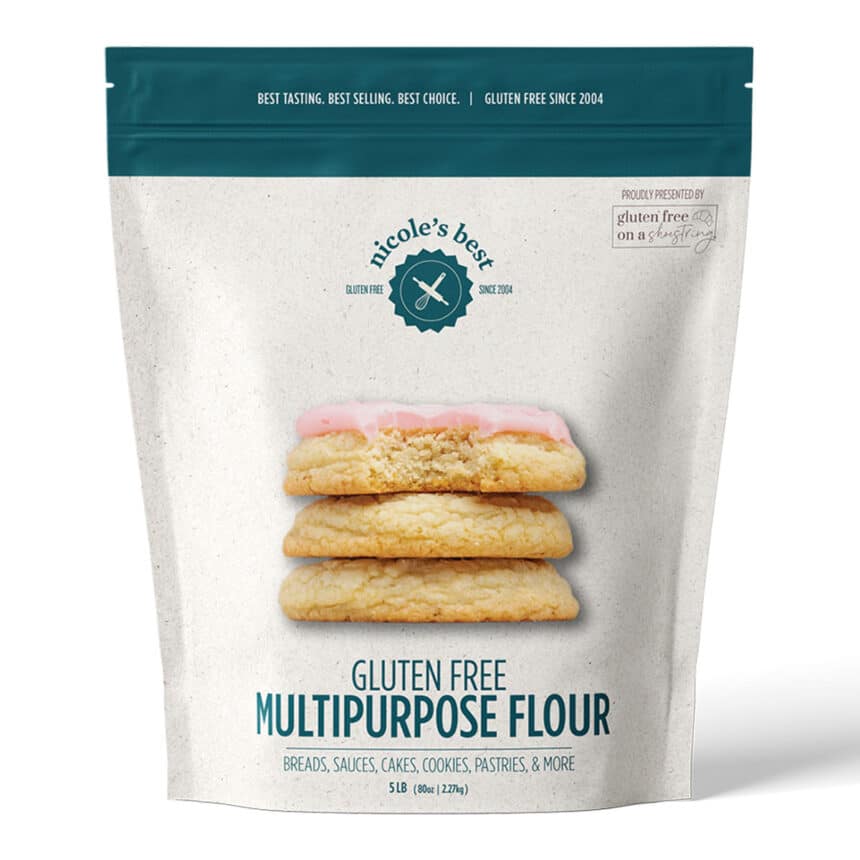
Nicole's Best Multipurpose Gluten Free Flour
Simply the best. This is my own blend, newly for sale. Made with premium ingredients, it has a smooth-flowing texture that can be used in breads, pastries, sauces, pancakes, and more.
Shop Now →
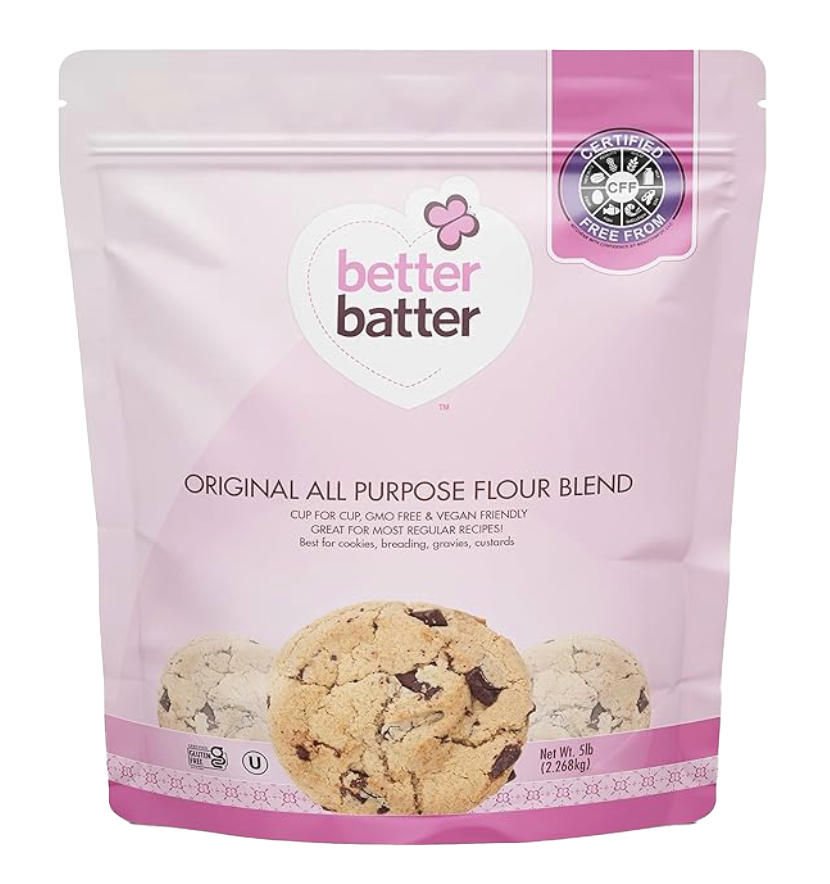
Better Batter Original All Purpose Gluten Free Flour Blend
Perfect for gluten intolerant, vegetarian, and vegan lifestyles. Make sure you purchase the “original” blend only!
Shop Now →
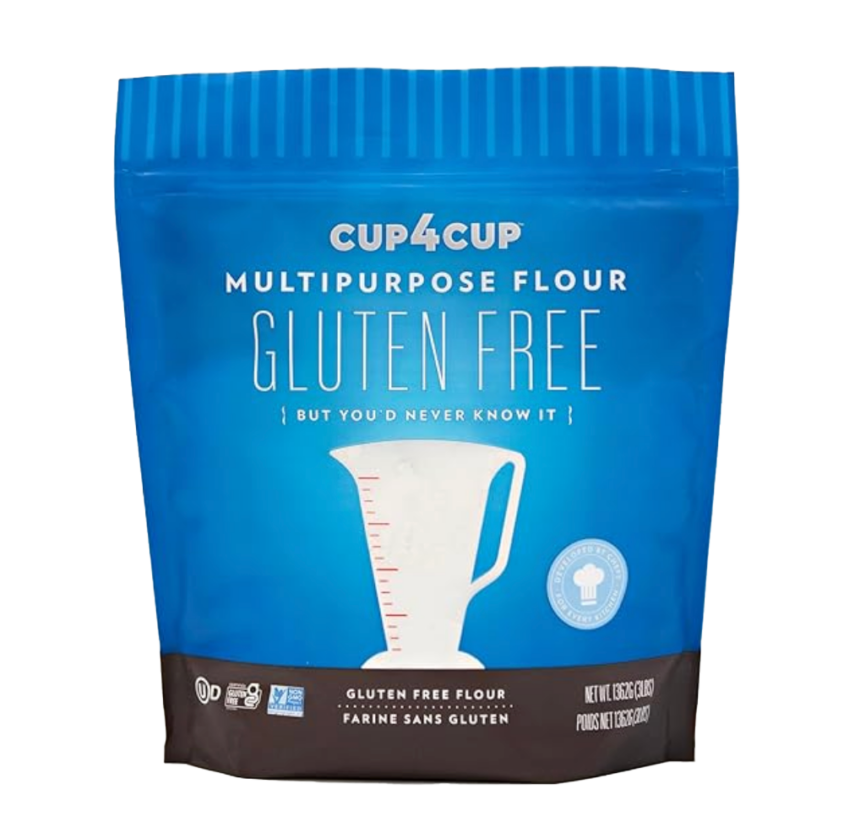
Cup4Cup Multipurpose Gluten Free Flour
This blend is lighter than Better Batter and has more starch, but it also has milk powder which adds great texture and some additional structure. It’s best as a pastry flour, but it works in all my recipes that call for an all purpose gluten free flour blend. Just some better than others!
Shop Now →
Brands to avoid
There are many other packaged blends on the market, and I'm afraid I can't recommend them. Here are the blends that that I’m afraid I don’t care for. I know how readily available most of these blends are, and I would like to be able to recommend them, but your results will not be consistently good:
- King Arthur Gluten Free Flour Blends: Their rice flour is relatively grainy, and the blend is simply too high in starch; avoid their blends at all costs when making gluten free yeast bread! I haven’t tried their new “bread flour” blend, yet, though.
- Jules Gluten Free: it’s made with a very, very high percentage of Expandex modified tapioca starch, so it’s very starchy and also rather gummy.
- Tom Sawyer blend: too starchy so it doesn't act like an all purpose blend and doesn't brown well
- Namaste: not properly balanced and doesn't perform well in my recipes
- Krusteaz: again, imbalanced component ingredients and doesn't perform well
- Bob’s Red Mill blends: their bean flour blend is simply unpleasant; their rice flour blends are unbalanced, grainy, and of inconsistent quality
- Pillsbury: the rice flour is very grainy.
- Betty Crocker Rice Flour Blend: grainy rice flour
- Trader Joe’s Blend: too starchy, grainy rice flour
- Better Batter’s “Artisan Blend”: it does not work properly in my recipes as it’s rice-free and was a good idea for those who must avoid rice, but unfortunately it just doesn't work as an all purpose gluten free flour blend
Making your own gluten free flour blend
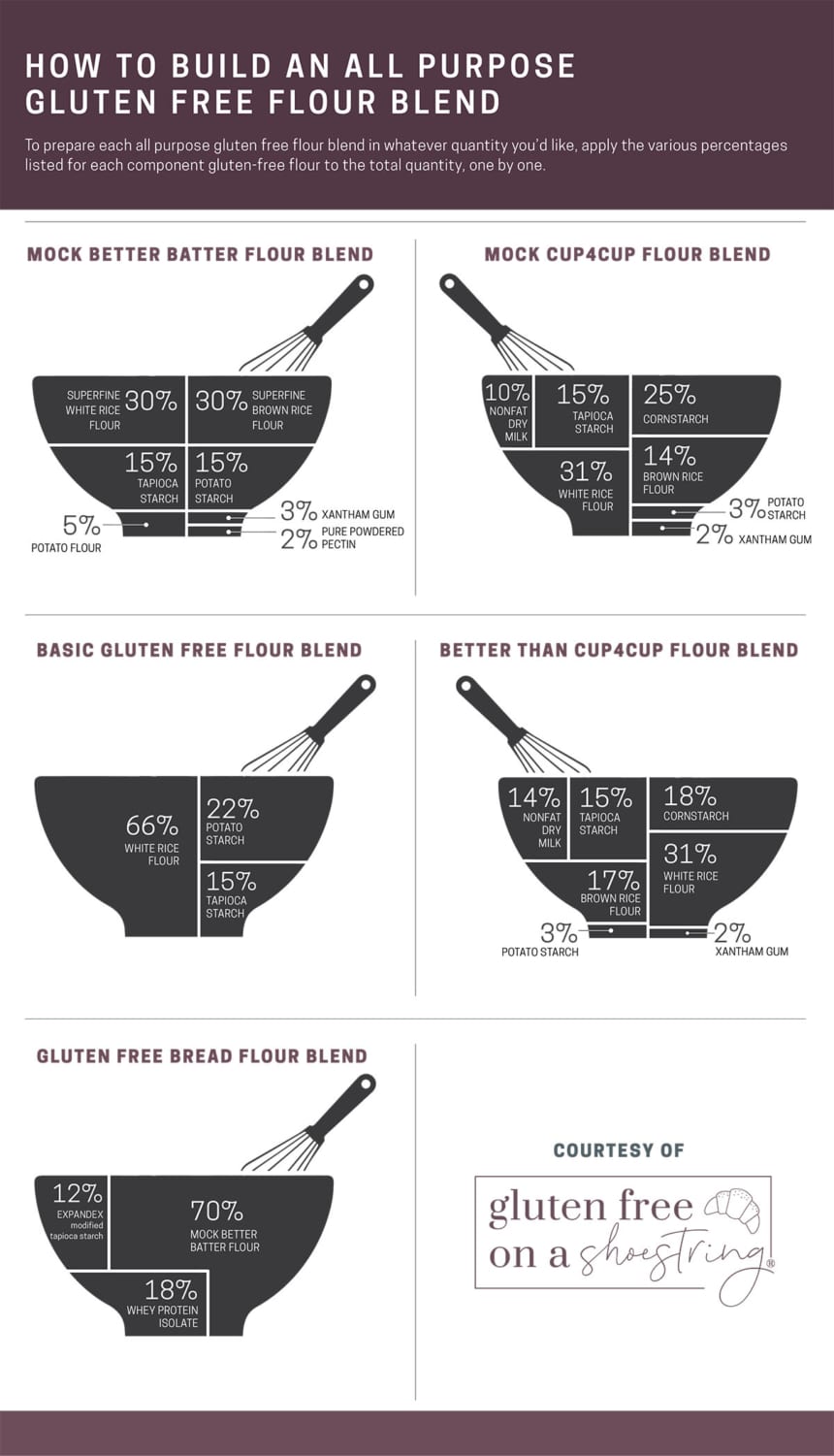
Basic principles to make your own blend
To build your own all purpose gluten free flour blend, you will need to purchase the component flours listed in each blend, and measure them according to their percentage of the total amount of flour you want to make as defined by each graphic.
If you'd rather not do the math using a calculator, I have a downloadable Excel file with a calculator for each blend! All the information explaining the blends, their usefulness, etc. is on this webpage. The link below is only to an Excel spreadsheet to do the math for you.
Download the Calculator →
Measure by weight, not volume
To prepare each all purpose gluten free flour blend below in whatever quantity you’d like, simply apply the various percentages listed for each component gluten-free flour to the total quantity, one by one.
You'll need a simple digital kitchen scale to build your blend. This one from Escali is inexpensive and has an 11 pound capacity. I own it myself. This one from Amazon Basics is even less expensive and I bet it's just as good. Both come with the batteries needed to operate them.
Place the batteries in the scale and turn it on. Place a bowl or other container on it, and press the “tare” button to zero out the weight of the container. Add, for example, enough superfine brown rice flour until the scale reads “42” grams, and then push “tare” again to zero out that amount. Continue with each ingredient on the list.
For example, if you wanted to put together 140 grams of flour (which is the proper measurement for “1 cup” of an all-purpose flour blend by volume in my recipes), using the Mock Better Batter Blend, here’s the math:
30% BRF = 30% (or 0.30) x 140 grams = 42 grams Superfine Brown Rice Flour
30% WRF = 30% (or 0.30) x 140 grams = 42 grams Superfine White Rice Flour
15% TS/F = 15% (or 0.15) x 140 grams = 21 grams good quality Tapioca Starch/Flour
15% PS = 15% (or 0.15) x 140 grams = 21 grams Potato Starch
5% PF = 5% (or 0.05) x 140 grams = 7 grams Potato Flour
3% XG = 3% (or 0.03) x 140 grams = 4 grams Xanthan Gum
2% PPP = 2% (or 0.02) x 140 grams = 3 grams Pure Powdered Pectin
If you add up all of the numbers, it will equal 140 grams (go ahead and check!). So make as much or as little as you like. I generally make 10 cups at a time of my favorite blend (which at this point is the “Better Than Cup4Cup Flour Blend”).
For the math-phobic: Reader Ryan Hunt also provided us with this handy Excel document that does the calculations for you for most of the following blends
Click “download” and save it to your own computer, then use it to do the calculations for you: DOWNLOAD HERE
Essential blend recipes
Mock Better Batter
This blend behaves just like Better Batter itself in recipes:
- 30% superfine white rice flour
- 30% superfine brown rice flour
- 15% tapioca starch/flour
- 15% potato starch
- 5% potato flour
- 3% xanthan gum
- 2% pure powdered pectin (I use Pomona brand; discard the calcium packet)
Better Batter is what I use when I need a bit more structure (like rolled and cut-out gluten free sugar cookies since it’s a very simple dough and I don’t want it to fall apart at all) and/or a bit more chew (like gluten free gingerbread cake and classic gluten free muffins).
It's also good for recipes like gluten free chocolate cake since I want them to rise evenly, and a lower starch blend is very helpful in that endeavor. Higher starch blends don’t usually hold together as well or rise as evenly.
Finally, with sturdy cookie recipes like thick and chewy gluten free chocolate chip cookies, the butter in the blends tenderizes the heavier Better Batter flour perfectly. This is my go-to blend for standard drop cookies.
I also use it, or Better Batter's original blend itself, to make my gluten free bread flour along with whey protein isolate, and Expandex modified tapioca starch.
Mock Cup4Cup
This blend behaves just like Cup4Cup's multipurpose blend in recipes. I do understand that they have reformulated the blend to exclude milk powder, but my blend is the same as their original, beloved version:
- 31% superfine white rice flour
- 25% cornstarch
- 15% tapioca starch/flour
- 14% superfine brown rice flour
- 10% nonfat dry milk powder
- 3% potato starch
- 2% xanthan gum
Although I haven’t tried this, the cornstarch and/or potato starch may be able to be replaced with arrowroot, and the xanthan gum with an equal amount of konjac powder.
Cup4Cup is really a pastry flour. High in starch, lower in protein, it’s just a dream for pastry. It surrounds the cold butter in gluten free puff pastry smoothly, and then puff effortlessly when the cold butter hits the heat of the oven and gives off steam.
The milk powder and xanthan gum in Cup4Cup give it enough protein and structure to trap the steam given off in the oven, so you get the flaky goodness of the beautiful gluten free biscuits, gluten free scones, and gluten free pie crust.
Better Than Cup4Cup
This is a tweaked version of Cup4Cup, which I affectionately call the Better Than Cup4Cup Flour. It corrects what I believe to be the imbalances in that blend:
- 31% superfine white rice flour
- 18% cornstarch
- 17% superfine brown rice flour
- 15% tapioca starch/flour
- 14% nonfat dry milk powder
- 3% potato starch
- 2% xanthan gum
It’s just light enough without being too starchy, never tough, and it’s particularly good for doughs that you have to roll out since it rolls out really smooth (like gluten free pierogi). It's great for slightly more delicate recipes like gluten free churros and recipes that I want to make more tender, like gluten free pound cake. I also really like it for lighter cookies, like gluten free snickerdoodles, gluten free butter cookies and gluten free drop sugar cookies.
Specialty purpose blends
Basic Gum-free Gluten Free Blend
This blend is good for recipes that either should not have any xanthan gum, or should have a reduced amount of xanthan gum. Anywhere you can use this blend, you can also use Nicole's Best, which does not contain xanthan gum.
It has only 3 simple ingredients:
- 66% superfine white rice flour
- 22% potato starch
- 12% tapioca starch/flour
I like to use this blend in delicate things like and gluten free pancakes, gluten free crepes, and gluten free puddings. It's also perfect in the roux that thickens gluten free gravy, gluten free cream of chicken soup, and in gluten free lemon bars that need some, but not a lot, of xanthan gum for a smooth custard filling.
Better Batter Pastry Flour Hack
As another alternative to Cup4Cup, if you don't want to buy both blends, you can turn Better Battter into a gluten free pastry flour by adding milk powder and cornstarch. For 1 cup (140 grams) of pastry flour, you'll need:
- 113 grams Better Batter Gluten-Free Flour
- 12 grams gluten free nonfat dry milk
- 15 grams gluten free cornstarch
Since Cup4Cup is a dairy-containing flour, I also created a dairy-free way to hack Better Batter into pastry flour:
- 104 grams Better Batter Gluten Free Flour
- 18 grams gluten free blanched almond flour
- 18 grams gluten free cornstarch
Gluten Free Bread Flour
In one of my cookbooks, Gluten Free on a Shoestring Bakes Bread, I share yeast bread recipes that are made in a different way, with a gluten free bread flour that I created by combining Better Batter with whey protein isolate and Expandex modified tapioca starch in specific proportions. You can only use this blend successfully in recipes that specifically call for it. Any of my all purpose recipes will not work using my bread flour.
We do have a complete discussion of gluten free bread flour for you to read here on the blog, along with some recipes to make with it. For now, the basic proportions for 1 cup (140 grams) gluten free bread flour are:
- 100 grams Better Batter original blend or our mock version
- 25 grams whey protein isolate
- 15 grams Expandex modified tapioca starch
Common questions about gluten free flour
That can work sometimes, but usually it won't work or will make baked goods that look, taste, and feel different than you'd expect. The best gluten free baking calls for the best gluten free recipes. Even the best gluten free flour mixes will require more structure, often more moisture, and to be handled differently than all purpose wheat flour.
No! Not unless you have to avoid gluten for other health reasons. Gluten free flour isn’t naturally better for you than wheat flour.
Unfortunately, there really isn't a substitute for rice in all purpose gluten free flour blend. You are better off baking with almond flour and tapioca starch like we do in our almond flour banana bread or oat flour like we do in our oat flour brownies. If you can't have rice flour, you can also bake any of our flourless recipes, which don't call for any flour of any kind, rice or otherwise!
No! You can either add xanthan gum wherever it's called for in a recipe, or use a substitute like konjac powder as a binder in place of xanthan gum.
You can probably use arrowroot in place of cornstarch and potato starch. It won't replace tapioca starch, though.
Tapioca starch has unique stretchy properties, but you can try replacing it with superfine glutinous rice flour, also known as sweet white rice flour.
Measuring a cup of flour by weight, whether you “scoop and level” or not, will always yield at least slightly different results. Some measuring cups are just larger than others, and human error can't be avoided. Measure by weight and you'll have accurate results every time!
Yes, you can! I recommend my new flour blend, Nicole's Best, Better Batter original blend all purpose gluten free flour, or Cup4Cup multipurpose gluten free flour.
Per 140 gram cup, it’s just 100 grams Better Batter all purpose gluten free flour + 25 grams whey protein isolate + 15 grams Expandex modified tapioca starch.
Ready to bake? Try these 5 beginner-friendly recipes
Now that you understand the most basic element of baking gluten free baked goods, here are some great starter recipes. Develop some confidence by baking some of these simple one-bowl recipes using your new gluten free flour. Then, move on to the rest of the recipes on the blog and bake all of your favorites!

Thanks for stopping by!
Hi, I’m Nicole. I create gluten free recipes that really work and taste as good as you remember. No more making separate meals when someone is GF, or buying packaged foods that aren’t good enough to justify the price. At Gluten Free on a Shoestring, “good, for gluten free” just isn’t good enough! Come visit my bio!
